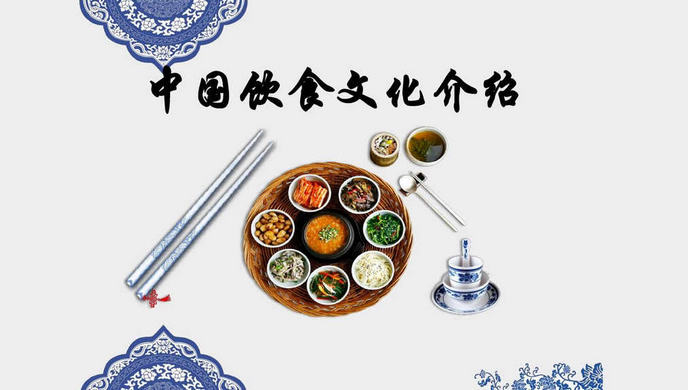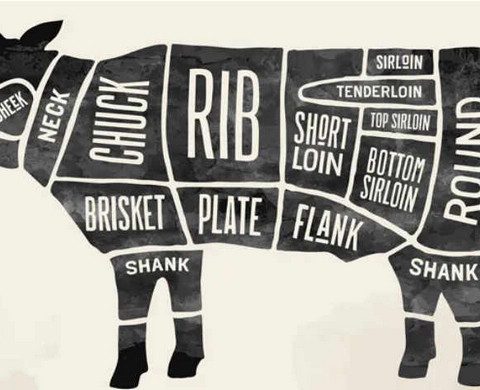Chinese food appeals to the senses through color, shape, aroma and taste. To achieve perfection in Chinese cooking, one must understand the techniques underlying the art.
Cutting
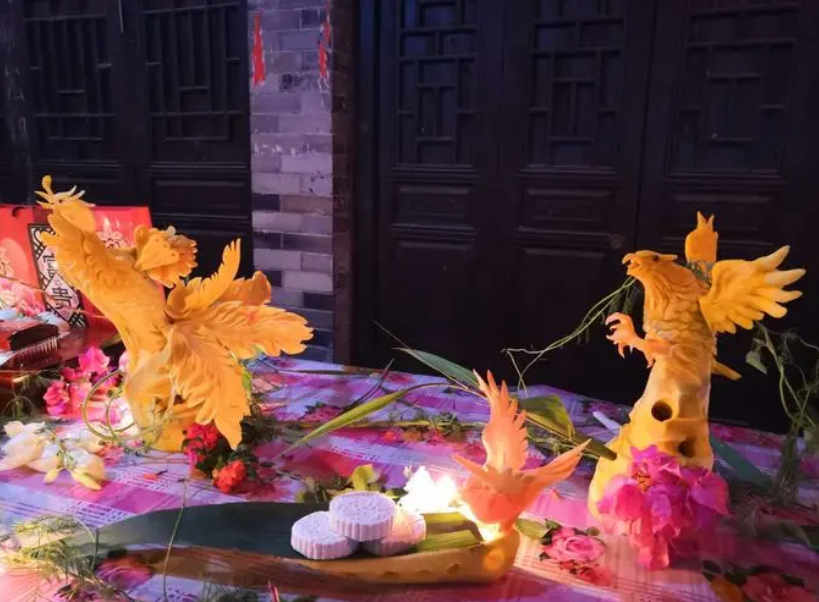
Shape depends in the main on cutting. Cutting will also affect the color, aroma and taste. Raw materials should be sliced, diced, shredded, cubed, minced or puréed depending upon the requirements of the dish and the character of the raw food. Cutting has been an integral part of the art for centuries. Confucius, the great philosopher and educator said 2000 years ago, “I will not eat food which is not properly cut.” We can not fault Confucius for being too particular here. Improper cutting makes food unattractive and causes an unevenness in color and taste. In stir-rying, improper cutting will result in the small pieces being overcooked and big pieces remaining raw.
A famous dish called “Thick Soup of Perch and Water Shield” made its appearance some time around the Jin Dynasty. The famous book “Qi Min Yao Shu” describes a preparation of the dish that calls for precise cutting. The bones of the perch must be picked out and the meat cut into slices 6 centimetres long. Water shields had to be shredded. “Perch and Shield” was so delicious that according to one historical text, a man named Chang Han chose to abandon his official post in Loyang so that he could return to his native Wuxian County in Jiangsu Provinceto taste the famous dish. Emperor Yangdi of the Sui Dynasty was said to have praised “Perch and Shield” highly. The many recipes left to us from the Tang Dynasty show that dexterity with the knife was required of all good chefs and today we enjoy a rich variety of cold and hot foods which are presented in intricate design and artful arrangement.
Flavoring
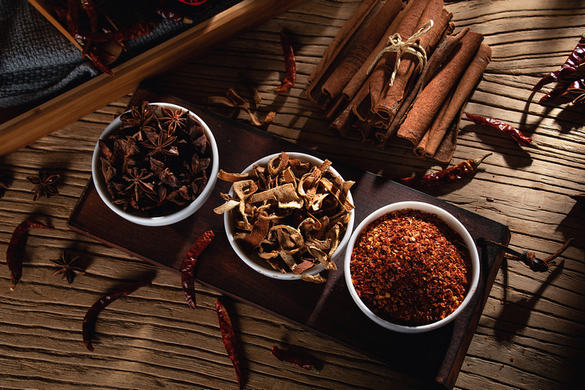
Taste depends in the main on flavoring. The proper use of seasonings and spices is extremely important. There are many tastes — salty, sweet, sour, pungent, fragrant, bitter and so forth and of them salty is predominant.
Salt can not only improve the flavor, it can eliminate fishy or gamy flavors in food.
Sugar sweetens and it can dissolve fats and eliminateor offset bitter flavors in some foods.
Vinegar dissolves calcium found in food and it cuts the greasiness of a dish.
Peppers have their unique pungent aromas which make food more appetizing. Bitter tastes are not usually desirable in a dish, but a little bitter can eliminate certain undesirable flavors and can enhance the deliciousness of other ingredients.
The proper use of seasonings will produce a variety of dishes to suit avariety of appetites. In cooking a good cook must know what to add, how much to add and when to add it. Different spices should be added at dif.ferent stages of preparation. Mastery of the condiments, spices and seasonings is mastery of the art. The ancient text “Shang Shu” or “The Book of History” notes that salt and plum were necessary ingredients in making soup. Vinegar did not exist at the time and sour plums were used instead. In the Spring and Autumn Period, Duke Qi Huan, the leader of five states, (?—720 B.C.) was recorded to have felt unwell one night. His mouth was hot and dry and his heart was pounding, Yi Ya, his favorite subject, a chef famous for his use of flavors, made a bowl of soup for the Duke. The soup cured him of his condition and he recovered quickly. Regardlessof the taste of the original ingredients, a truly delicious dish depends on the seasoning. By varying their use of flavorings, Chinese chefs have created new tastes: tingling spiciness of “Mala”, the combination of sweet, hot and salty of “Yuxiang” (fish flavor), the spicy, sesame of”Guaiwei” and so on.
The Fire
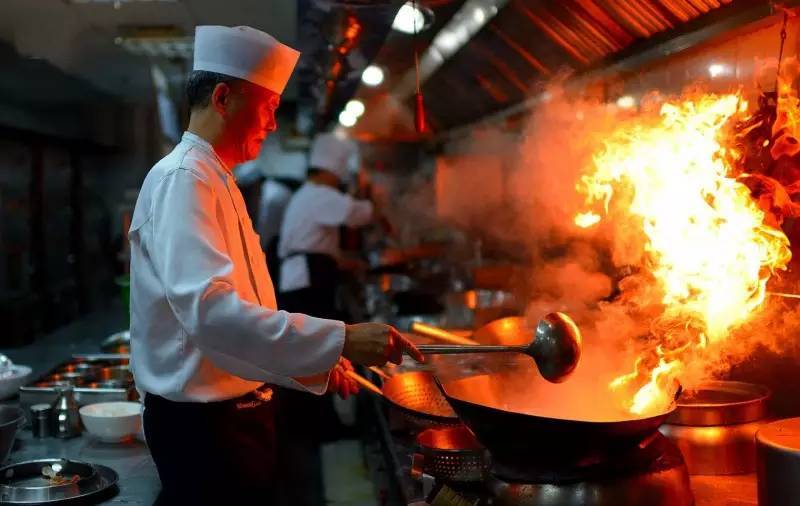
Chinese chefs pay particular attention to the control of the fire, manipulating it to bring out certain flavors and to cook, raw foods to just the right degree of doneness. Chinese chefs have known the importance of controlling the fire since the earliest recorded recipe. The “eight delicacies” of the “Zhou Li” and “Li Ji” call for stewing or braising, cooking over a slow fire for a long time. In the “Chapter on Natural Tastes” of “The Annals of Lü” control of the fire was pointed to as affecting the taste of food. A proper fire meant a delicious dish. Su Dongpo (1037 —1101), the great writer of the Song Dynasty, was also expert in cooking. He created a way of stewing pork and it has been known ever since as “Dongpo Pork”. The great writer even immortalized his pork in a poem. “A slow fire, a little water and it will be delicious.” Generally speaking, where the food is cut in large pieces it should be cooked over a small or tiny fire for a long time. Such cooking methods are essentially stewing or simmering. Foods cut in small pieces are cooked quickly over a high flame and these cooking methods are all a form of frying or stir frying. There are other cooking methods to use all depending on the dish you want to prepare. In stewing or simmering particular attention is paid to the pot or cooking utensil. Instead of the common everyday pot, special pots are used and they are sometimes sealed before the heat is applied. For instance, there is a dish called “Earthen Jar Pork” in Beijing cooking which is stewed in a sealed earthenware jar. The famous Fujianese dish “Buddha Jumpsover the Wall” is prepared by putting the ingredients in a Shaoxin wine jar, sealing the jar with lotus leaves and then cooking them over a slow fire for a fairly long time. The ingredients should be soft, glutinous and fresh with a delicious aroma. It will assault your senses as soon as it is put on the table. A poem has described it: “The aroma perfumes the ait the moment the jar is opened; Buddha will give up meditation and jumpover the wall.” The name of the dish came from the poem. Its successdepends on controlling the fire.
Regional Styles
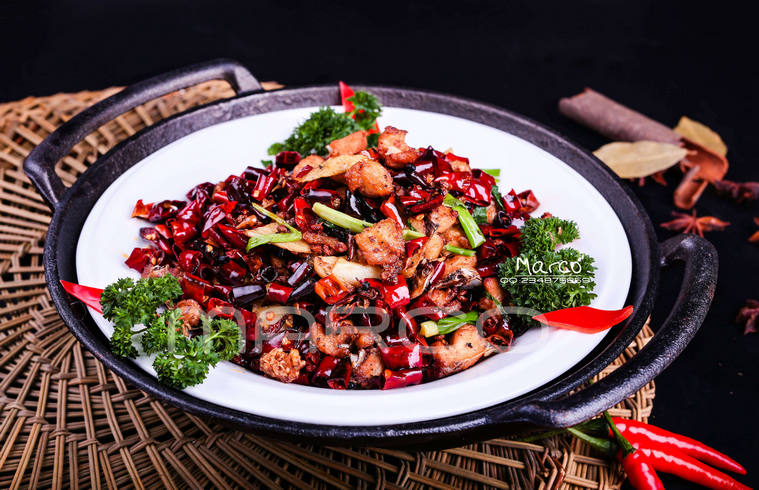
China is a big country. Different regions enjoy different elimates, natural resources and different foods. The variety of regional styles and dishes is enormous, calling on special condiments and cooking techniquesto produce different flavors. For condiments, Sichuan is known for its broad bean paste; Guangdong has oyster sauce; Fujian has “Hongzao”, a red fermented grain; and Hunan has fermented soya beans or “blackbeans”. For regional styles, Beijing is knewn for its fried foods, crisp and tender. Suzhou style is noted for its simmering and braising techniques. Suzhou cooking is a bit on the sweet side but very heavy in flavor and favoring a melt in your mouth tenderness. Sichuan cooks specialize in chilis and hot pepper and are famous for aromatic and spicy sauces. Guangdong cooking makes use of many, many ingredients and looks for fresh, tender, crisp textures. Fujian cooks work with clear broths and different frying techniques favoring light sweet and sour flavors. Hongzao, a red fermented grain, is frequently used to flavor Fujian dishes. Anhui cuisine is famous for its use of game. It stresses the natural flavors of the ingredients. Zhejiang dishes tend to the fried and are delicately crisp. Hunan cooking favors the use of vinegar. Its smoked foods are distinctive and hot and sour flavors characterize the region’s dishes. Shandong cuisineis famed for its soups: clear soups and milk soups.
Individual tastes may vary, but color, design, taste and aroma are what bring a person to the table. And only by coming to the table, can one sample the different flavors and foods from the regions of China which make Chinese cuisine so rich and varied.

